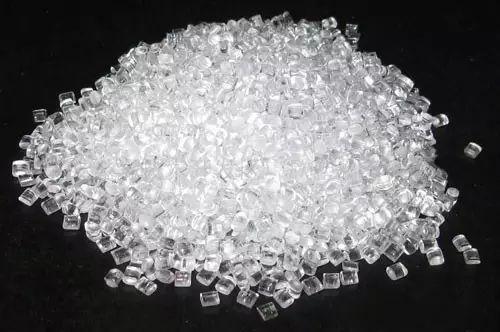PC is one of the commonly plastic materials, let us learn more about it together .
1. Performance of PC
Polycarbonate is a thermoplastic resin containing -[O-R-O-CO]-links in the molecular chain. It can be divided into aliphatic, alicyclic, and aliphatic-aromatic types according to the ester groups in the molecular structure. Among them, aromatic polycarbonate has practical value, and bisphenol A polycarbonate is the most important, with a molecular weight of 30,000-100,000.
PC is an amorphous, odorless, non-toxic, highly transparent, colorless or slightly yellow thermoplastic engineering plastic with excellent physical and mechanical properties, especially excellent impact resistance, high tensile strength, bending strength, and compression strength; good toughness, good heat and weather resistance, easy to color, and low water absorption.
PC has a heat deformation temperature of 135-143℃, low creep and stable dimensions; it has good heat resistance and low temperature resistance, stable mechanical properties, dimensional stability, electrical properties and flame retardancy in a wide temperature range, and can be used for a long time at -60~120℃; it has no obvious melting point and is in a molten state at 220-230℃; due to the high rigidity of the molecular chain, the resin melt has high viscosity; it has low water absorption and shrinkage (generally 0.1%~0.2%), high dimensional accuracy, good dimensional stability, and low film permeability; it is a self-extinguishing material; it is stable to light, but not resistant to ultraviolet light, and has good weather resistance; it is resistant to oil, acid, strong alkali, oxidizing acid, amines, and ketones, soluble in chlorinated hydrocarbons and aromatic solvents, has antibacterial properties, flame retardant properties, and anti-pollution properties, and is prone to hydrolysis and cracking in water for a long time. The disadvantage is that it is prone to stress cracking due to poor fatigue resistance, poor solvent resistance, poor fluidity, and poor wear resistance. PC can be injection molded, extruded, molded, blow molded, thermoformed, printed, bonded, coated and machined. The most important processing method is injection molding.
2.Process characteristics of PC
PC materials are sensitive to temperature. Their melt viscosity decreases significantly with increasing temperature, and their flow speeds up. They are insensitive to pressure. To improve their fluidity, it is necessary to increase the temperature. PC materials must be fully dried before processing (about 120°C, 3~4 hours). The moisture content should be controlled within 0.02%. Trace amounts of moisture will cause the product to produce a turbid color, silver threads and bubbles when processed at high temperatures. PC has considerable forced high elastic deformation capacity at room temperature. High impact toughness, so cold forming processes such as cold pressing, cold drawing, and cold rolling can be performed.
PC materials should be molded under high material temperature, high mold temperature, high pressure and slow speed. For smaller gates, low-speed injection is used, and for other types of gates, high-speed injection is used. It is better to control the mold temperature at around 80-110°C, and the molding temperature should be 280-320°C. PC products are prone to gas bubbles on the surface, gas lines at the nozzle, large internal residual stress, and easy to crack.
Therefore, PC materials have high requirements for molding processing. PC materials have low shrinkage (0.5%) and small size changes. PC products can be annealed to eliminate their internal stress. The molecular weight of PC for extrusion should be greater than 30,000, and a gradual compression screw should be used, with a length-to-diameter ratio of 1:18~24 and a compression ratio of 1:2.5. Extrusion blow molding, injection-blow molding, injection-stretch-blow molding can be used to form high-quality, high-transparency bottles.
3. Typical application range:
The three major application areas of PC are glass assembly industry, automobile industry, electronics and electrical industry, followed by industrial machinery parts, optical disks, civilian clothing, computers and other office equipment, medical and health care, films, leisure and protective equipment, etc.



